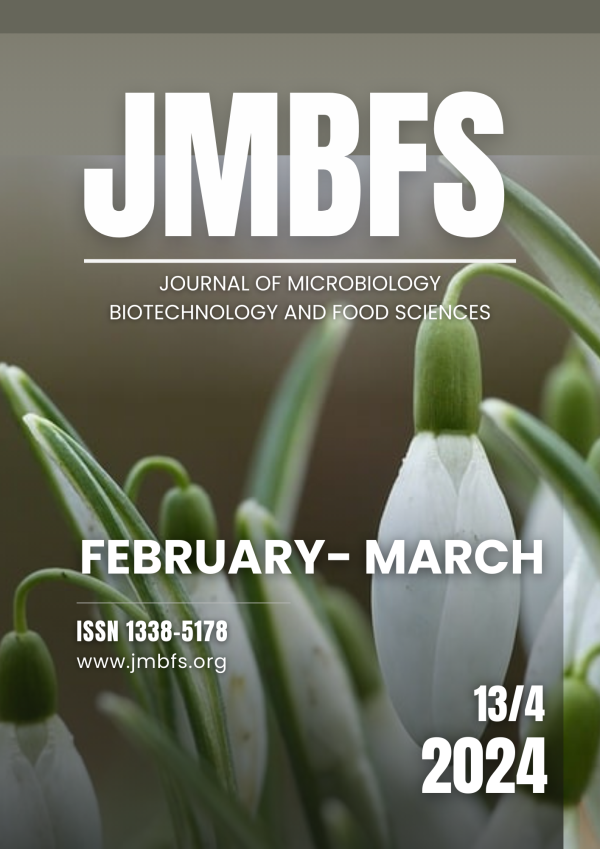ASSESSMENT OF THE HYGIENIC CONDITION OF THE SLAUGHTERHOUSE BASED ON THE EVALUATION OF MICROBIOLOGICAL SWABS
DOI:
https://doi.org/10.55251/jmbfs.9469Keywords:
disinfection, hygiene, microbiological swabs, slaughterhouseAbstract
This study objective was to evaluate the hygienic condition of surfaces by microbiological swabs and the effectiveness of disinfectant Virkon S. Level of hygiene was evaluated in a small-capacity slaughterhouse located in the Košice region with a maximum weekly capacity of 5 large livestock units. Microbiological swabs were taken from an area of 10 cm2 before the process of slaughtering, during the process, and after disinfection. Disinfectant Virkon S was used in a 1% concentration during an exposure time of 30 minutes for disinfection of monitored surfaces. Disinfectant was effective on surfaces of cage, wall, floor, and (p<0.0001), where was determined significant decrease of microorganisms, but we recorded 1.0 x 104 colony forming units (CFU)/10 cm2 of the total count of bacteria (TCB) on the cage, 7.5 x 103 CFU/10 cm2 of TCB on the wall and 1.5 x 104 CFU/10 cm2 of TCB on the floor after disinfection, which indicates an insufficient level of disinfection. From the achieved results, it is clear, that the disinfection provided by the disinfectant Virkon S was not effective, as the evaluated disinfectant did not achieve a decrease in the number of microorganisms and thus did not ensure a sufficient level of hygiene. We concluded that it is crucial to effectively disinfect products using the right disinfectant at the right exposure period since it helps to stop the spread of several germs that could contaminate products and have a negative impact on consumers' health.
Downloads
Downloads
Published
How to Cite
Issue
Section
License
Copyright (c) 2023 Mária Vargová, Katarína Veszelits Laktičová, František Zigo, Ibrahim F. Rehan

This work is licensed under a Creative Commons Attribution 4.0 International License.
All papers published in the Journal of Microbiology, Biotechnology and Food Sciences are published under a CC-BY licence (CC-BY 4.0). Published materials can be shared (copy and redistribute the material in any medium or format) and adapted (remix, transform, and build upon the material for any purpose, even commercially) with specifying the author(s).





